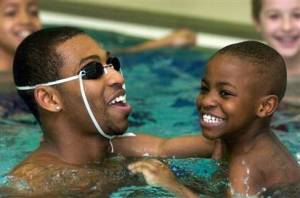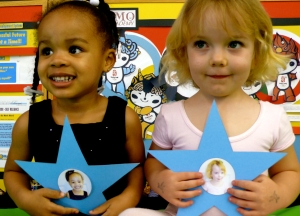Do we have to wait for the holidays to teach values?
22 Ways to Teach generosity to children
This is part 1 of a 2 part article on teaching children to give outside of the “season of giving.”
As you know, I coach the top instructors, coaches, teachers, and leaders in the children’s after-school program industry. If you’re part of a Powerful Words member school lead by some of these industry leaders, you know that the powerful word of the month is generosity. Sometimes people are curious about why I don’t reserve such a concept for when we are celebrating Christmas, Hanukkah, and Kwanzaa. Isn’t that the “season of giving?”
While holiday time is a wonderful time to talk about generosity and gratitude, I think it’s important to spread the word about giving throughout the year. During the summer, contributions to charities are down. People are thinking about vacations—not donations. The structure of the school day is out and the lazy summer schedule rules. But giving and generosity is just as important in August as it is in December, right?
As we are getting ready to go back to school in this half of the world, it’s only natural that our attention turns back to manners, giving, generosity and respect. These values help children to make and keep friends, excel in school, and feel fulfilled.
As we’ve recently talked about helping children create a “bucket list” that stresses giving over receiving, let’s delve deeper into the topic of children and generosity. This 2-part article contains 22 ways to teach children the gift of giving all year ‘round.
Here are the first 11:
(1) “Can Can:” Ask your children to go through the pantry at home and find any canned goods that haven’t been used within the last 6 months. If they’re not being eaten, give them to a family who can use them!
(2) “Grocery Grab:” Request that your children pick out one item each at the grocery store to contribute to the local food pantry.
(3) Planned Percentages: Direct your children to set aside a certain percentage of their allowance, job money, or money that came through gifts for the purpose of giving to charity. Then help them choose a charity that is meaningful to them, allow them to research it, and motivate them to write the letter telling the charity how much and why they want to donate to them.
(4) Entertain “the troops:” Visit an assisted living facility or a nursing home so that your children can sing songs, play games, and read with the seniors there.
(5) Out of the Closet: After every other season, have a “closet day” in which your children spend some time going through their closet and bagging up the things that are too small or unused. Then drive them to the drop off center or charity and allow them to contribute their donations.
(6) Out of season giving: Ask your children to help make cards or wrap presents for people outside of your family and circle of friends. Perhaps these contributions would be for the local children’s hospital or other charity. It doesn’t need to be holiday time to do this! Be different!
(7) Adopt a friend: Invite someone who doesn’t have family nearby to share a meal or come over for a movie. You wouldn’t believe how grateful they will be just to feel included.
(8) A Giving Living: Talk to your children often about generosity, giving, and how they can give of themselves each day. It’s amazing that the more we give, the more we get out of living.
(9) “I just called to say…:”Encourage your children to call elderly family members—even extended family members– just to say hello, tell them what’s new, and ask them what they’re up to these days. A simple call can make someone’s day.
(10) Cards Held in High Regard: Ensure that your children send out thank you cards. If they’re very young, have them sign them in their own way—either with their name, a drawing, or decorative stickers.
(11) Characters with Character: Read books that illustrate the power of giving. Talk about the characters with your children and ask them how each character showed generosity of spirit. What did they admire?
Stay tuned for 11 more ways to teach children generosity outside of the season of giving on Wednesday! In the mean time, what are your ideas? What ideas sound great to you? What ideas will you try this month? The more we share these ideas, the more we can inspire our children to become generous givers.
Have a Powerful Day!
Filed under: Character in Action, children, Dr. Robyn Silverman, Family, Generosity, Parenting tips, Powerful Words Info | Tagged: character queen, Child Development Expert, children, Dr. Robyn Silverman, Family, Generosity, powerful words, Values | 4 Comments »















